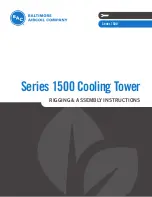
9.3 PIPING CONNECTION SIZE
Perform flaring work according to the figures and tables below:
Flare pipe dimensions
mm (in.)
0.4 ~ 0.8R
φ
A
φ
d
90
o
+ 2
o
45
o
+ 2
o
Diameter (
∅
d)
A
+0
-0.4
6.35 (1/4)
9.1
9.52 (3/8)
13.2
12.7 (1/2)
16.6
15.88 (5/8)
19.7
Thickness of copper pipes
mm (in.)
Diameter (
∅
d)
Thickness
6.35 (1/4)
0.8
9.52 (3/8)
0.8
12.7 (1/2)
0.8
15.88 (5/8)
1.0
Flare nut dimensions
mm (in.)
B
Flare Nut
Flare nut
Diameter (
∅
d)
B
6.35 (1/4)
17
9.52 (3/8)
22
12.7 (1/2)
26
15.88 (5/8)
29
Check that there are no scratches, adhered grinding swarf,
deformation or surface unevenness at the flaring part.
Before tightening the flare nut, apply the refrigerant oil (field-
supplied) in thin layer over the flaring part. Do not apply the oil
on other portions. Tighten the flare nut for the liquid pipe to the
specified torque with two spanners. Then, tighten the flare nut
for the gas pipe in the same way. After tightening work, check
that there is no refrigerant leakage.
Do not apply the
refrigerant oil to
the outside of the
flaring part.
Apply Refrigerant Oil.
Apply refrigerant oil
Required tightening torque
Pipe Size
Tightening Torque
Ø6.35 mm (1/4)
14 - 18 (N-m)
Ø
9.52 mm (3/8)
34 - 42 (N-m)
Ø
12.7 mm (1/2)
49 - 61 (N-m)
Ø15.88 mm (5/8)
68 - 82 (N-m)
?
N O T E
•
If the refrigerant oil contacts the air panel, it may cause a crack. Be
careful that the refrigerant oil does not contact the air panel.
!
C A U T I O N
Tighten the flare nuts according to the specified torque. If an excessive
force is applied, the flare nuts may crack due to aging degradation,
causing refrigerant leakage.
If temperature and humidity inside the ceiling exceed 27ºC/
RH80%, dew condensation occurs on the surface of the
accessory insulation. Wrap additional insulation (approx.
5~ 10mm thickness) around the accessory insulation of the
refrigerant pipe as a preventive measure.
For buried pipe with joints such as an elbow or a socket, provide
service access doors to facilitate the check for connection.
The pipes must be reinforced by an earthquake resistant
support so that they will not be damaged by an external force.
Do not clamp the refrigerant pipe tightly when supporting them
for prevention of heat stress.
When connecting indoor/outdoor units with refrigerant pipes, fix
the pipes as required so that the pipes may not to contact weak
portions of the wall, ceiling, etc. Failure to take this measure
may lead to an abnormal sound caused by the vibration of the
pipe.
Perform the air tight test according to Installation and Operation
Manual of the outdoor unit.
REFRIGERANT PIPING
PMML0477 rev.0 - 07/2017
14
Содержание RAI-50PPD
Страница 2: ......













































